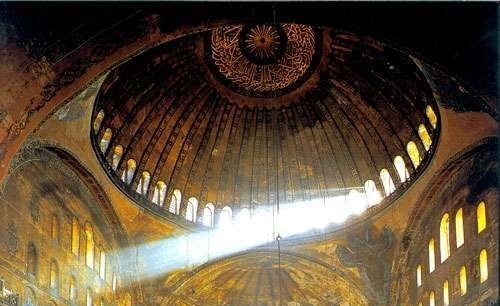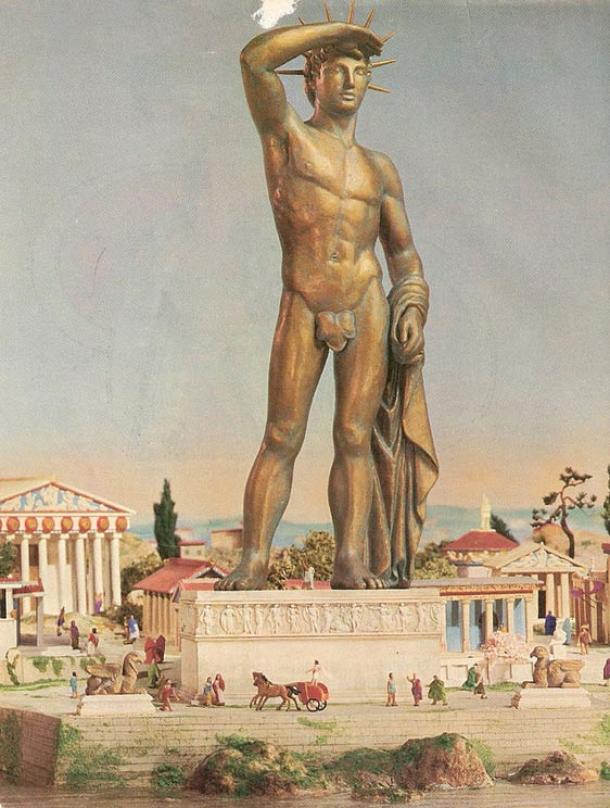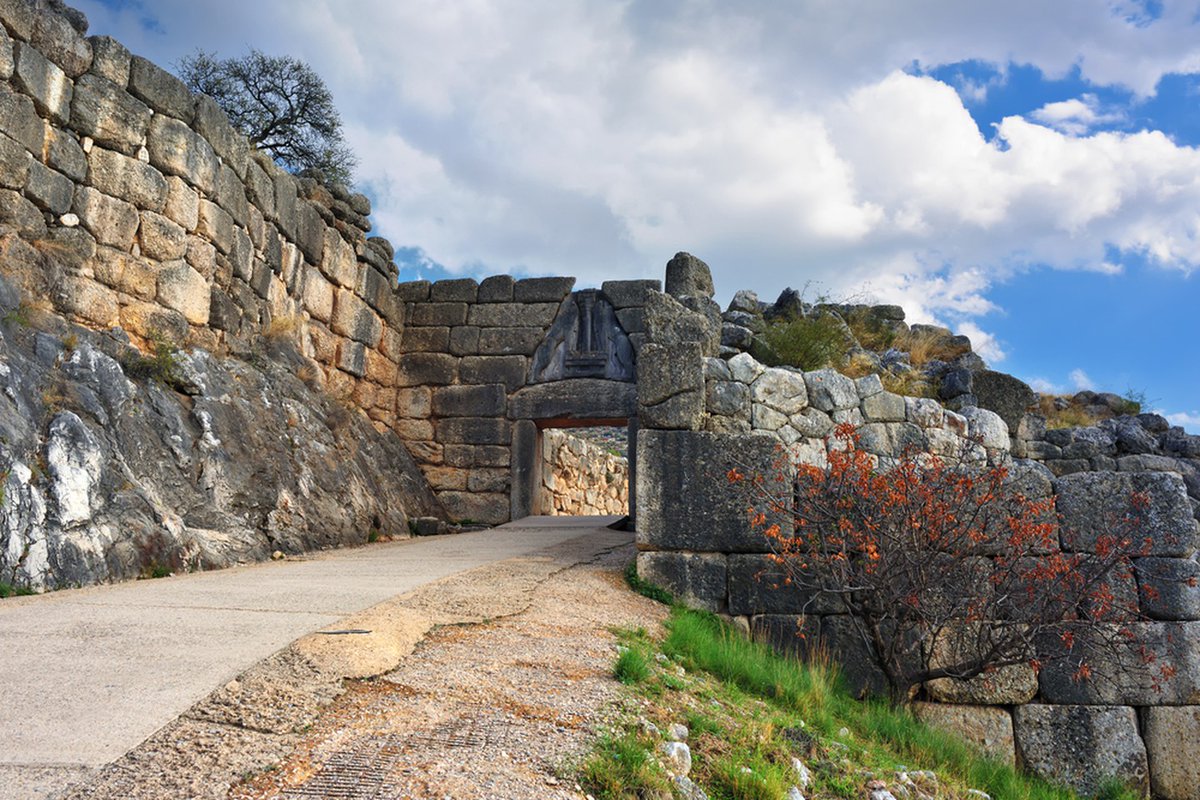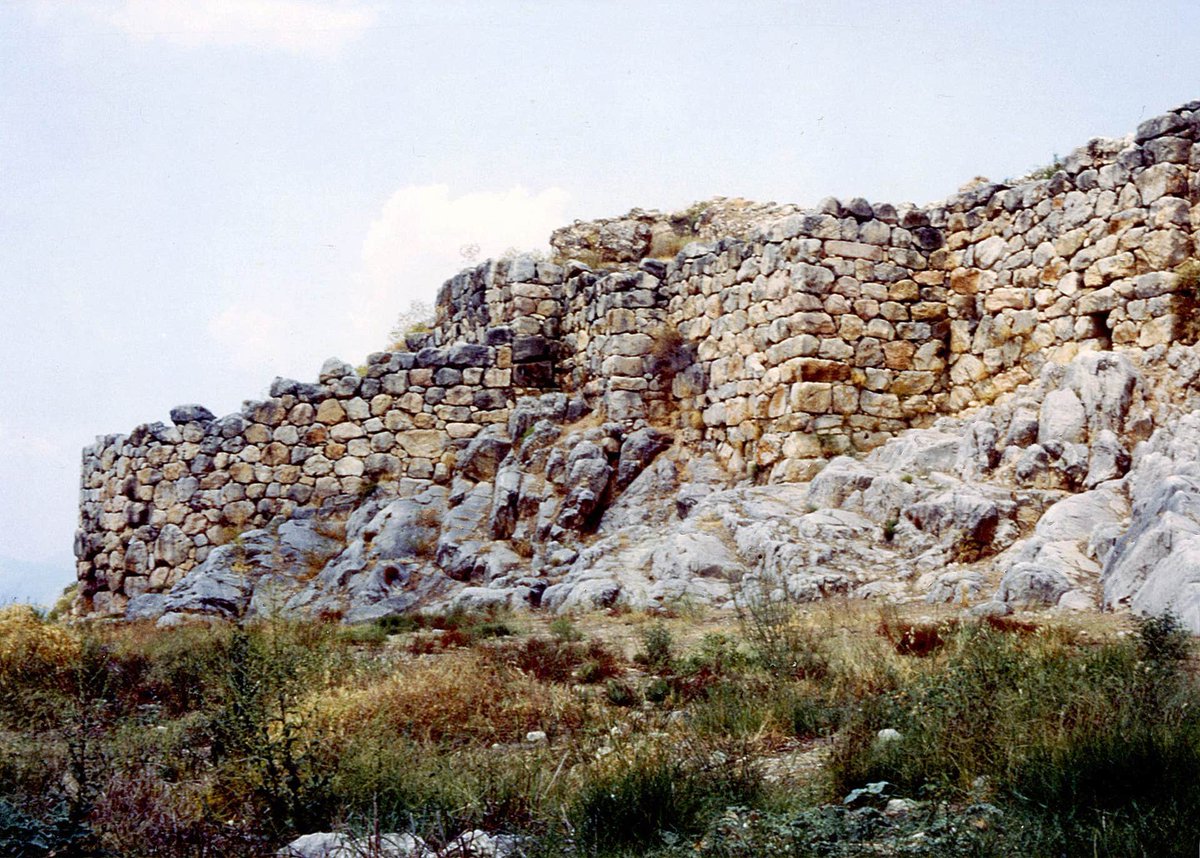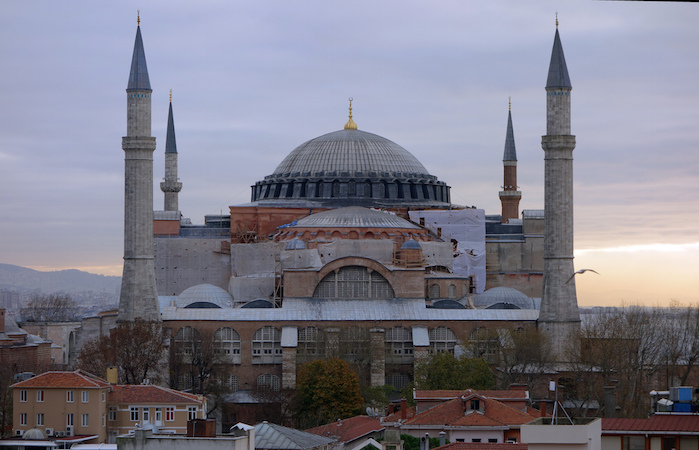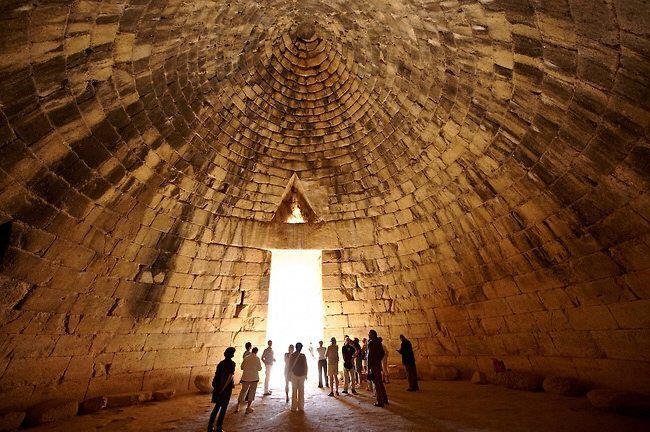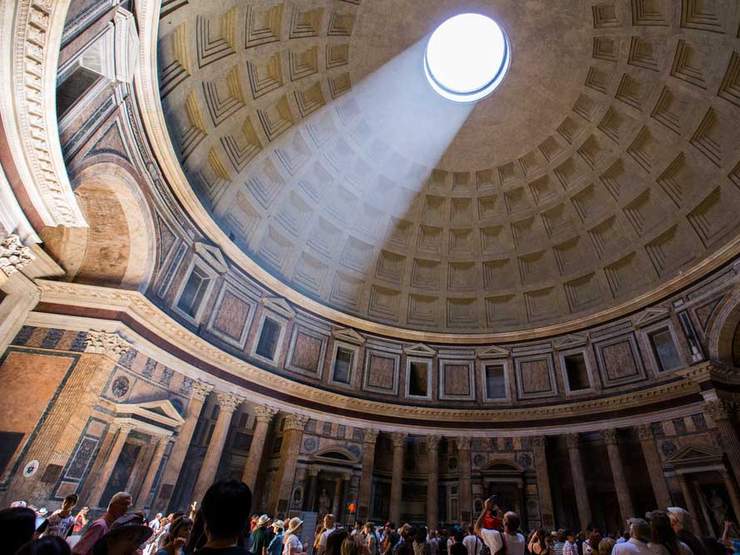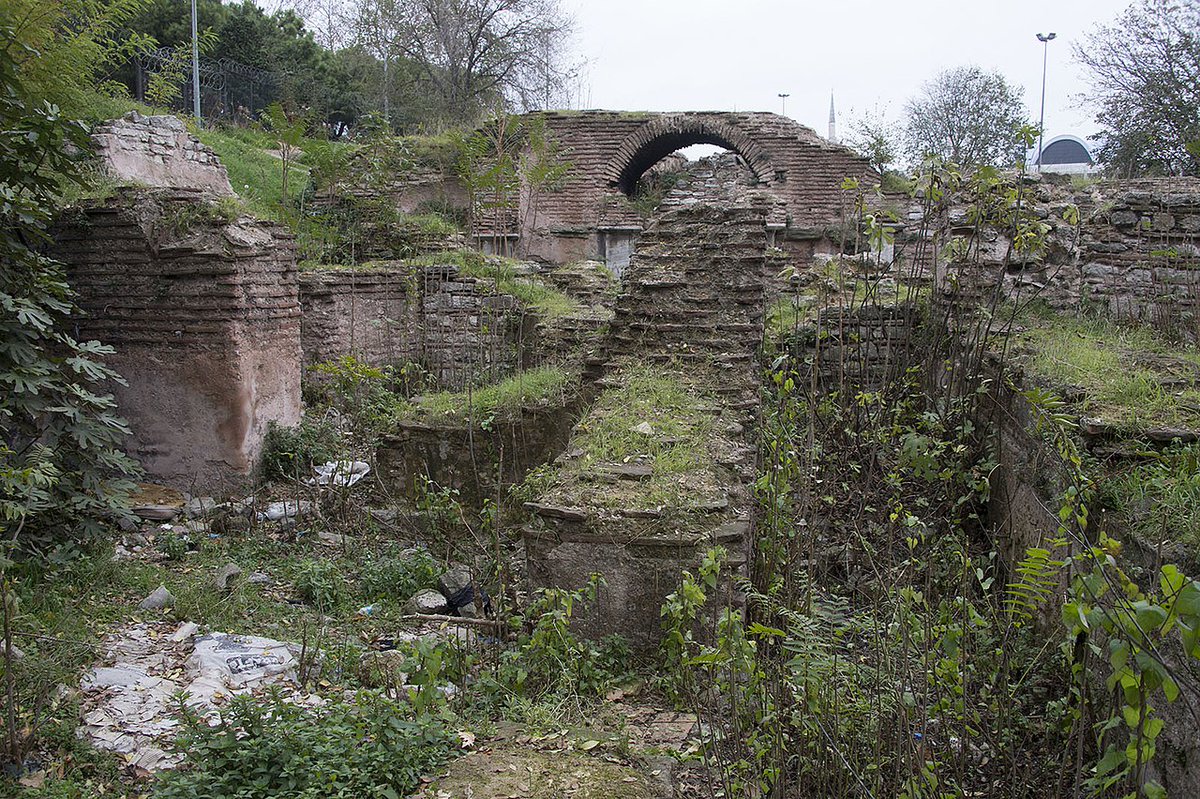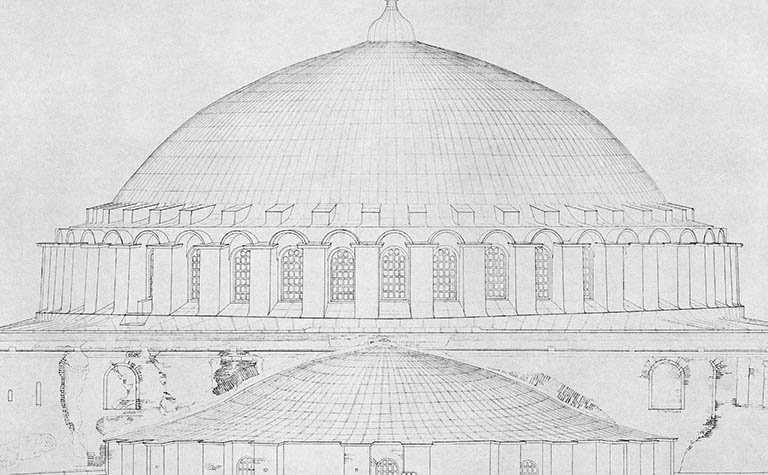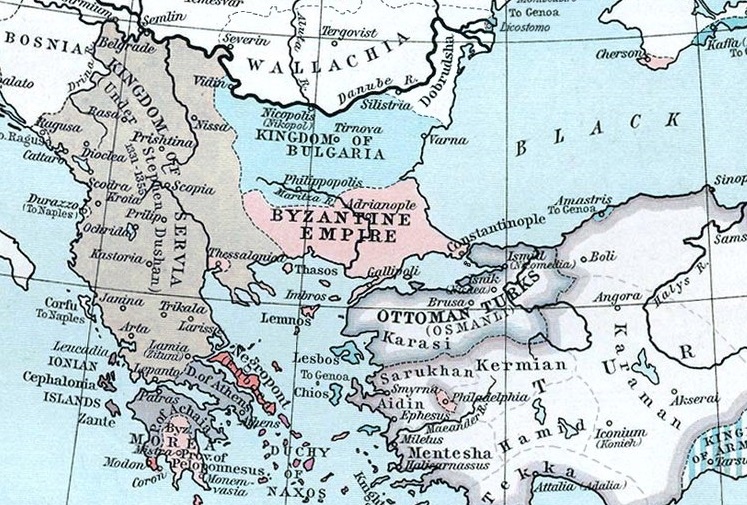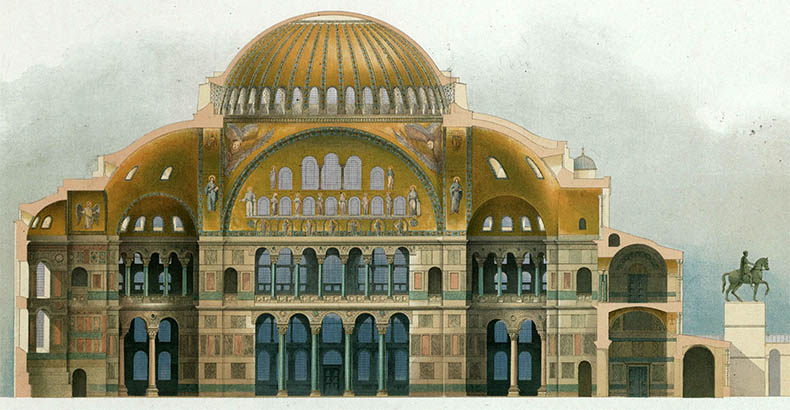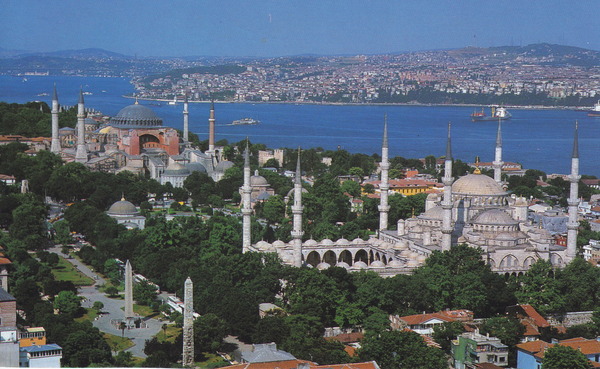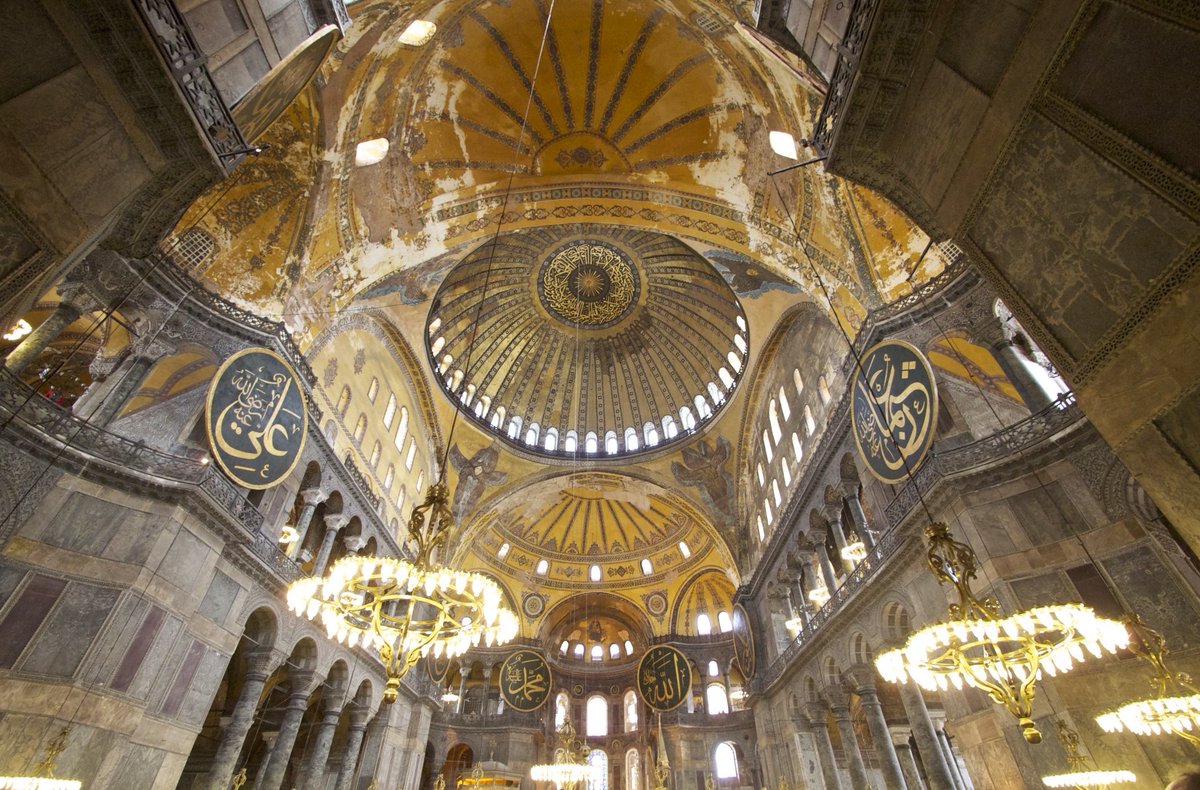THE DOME OF HAGIA SOPHIA
Why was the Hagia Sophia such an achievement? Not least because it was the world’s largest domed basilica for 1000 years.
Domes in turn helped deal with a very ancient problem in the Mediterranean: earthquakes.
Thread
Why was the Hagia Sophia such an achievement? Not least because it was the world’s largest domed basilica for 1000 years.
Domes in turn helped deal with a very ancient problem in the Mediterranean: earthquakes.
Thread
Earthquakes have always been a fact of life in the seismically-active Mediterranean, occasionally collapsing buildings or even entire cities. Three of the Seven Wonders of the World, for instance, were destroyed by earthquakes.
Civilizations adapted: the Mycenaeans used large rough-hewn stones to construct their palaces—so-called Cyclopean architecture—which might have had an anti-earthquake function: gaps dampened the shock waves, and large stones could shift without the entire structure collapsing.
(This has incidentally helped archaeologists understand the period by observing distorted stone patterns caused by earthquakes in still-standing walls.)
The quintessentially Byzantine brick-and-stone striped walls served a similar function, the brick bands acting as shock-absorbers for the rigid, close-fitted stone blocks. https://twitter.com/byzantinemporia/status/1199443090215444485
The best anti-earthquake measure was mass. Any large structure had to have thick walls supported by buttresses. Hagia Sophia’s squat profile reflects this.
This could prevent the entire structure from collapsing, but it didn’t guarantee it would remain completely intact. The taller a building was, the more liable it was to have its roof collapse under a tremor.
Domes however are extremely stable. They employ the same self-reinforcing principle as an arch, but in three dimensions. Their shape also redistributes weight over a wide area:
The use of domes goes back at least to the Mycenaeans, who used them in their underground tombs.
The Romans had long used them: the Pantheon, built in 128, is 40% wider than Hagia Sophia’s dome (although the building is smaller overall).
The Romans had long used them: the Pantheon, built in 128, is 40% wider than Hagia Sophia’s dome (although the building is smaller overall).
Romans started experimenting with domed basilicas in the 4th and 5th centuries. The first in Constantinople is believed to be St. Polyeuktos, built in the 520s. Judging by remaining structural elements, it would have reached 30 meters in height.
Justinian ordered construction on the Hagia Sophia to begin in 532.
It was a wonder: in less than six years, his architects constructed a cathedral that was 49 meters high, with a dome 32 meters across.
It was a wonder: in less than six years, his architects constructed a cathedral that was 49 meters high, with a dome 32 meters across.
The original dome was rather flat, however, reducing its stability.
Justinian’s architects quickly learned their lesson: a series of earthquakes in the 550s damaged the structure and the dome collapsed in 558, barely 20 years after its inauguration.
Justinian’s architects quickly learned their lesson: a series of earthquakes in the 550s damaged the structure and the dome collapsed in 558, barely 20 years after its inauguration.
A new dome was built that was 6 meters taller than before, projecting its weight farther downward. This is the one that survives today.
There were still structural problems. A bad earthquake in 869 caused one of the semi-domes to collapse. In a 989 quake, the western arch collapsed.
After both disasters, structural reinforcements were added during repairs.
After both disasters, structural reinforcements were added during repairs.
Any building as ambitious as Hagia Sophia was bound to be an ongoing experiment. Without modern engineering knowledge, it was impossible to know the exact structural requirements—when pushing existing techniques to the extreme, there was always uncertainty.
The choir vault in Beauvais Cathedral, for instance, collapsed in 1284, just 12 years after completion. This was at a time when cathedral architects were competing to build the tallest and thinnest walls possible—Beauvais’ were the highest in the world.
Another series of bad earthquakes damaged the Hagia Sophia in the mid-14th century, cracking the dome in 1344 and collapsing other parts of the building in 1346. The empire was so broke by then that repairs took years, dragging until 1354—the church was closed all this time.
This was a dark time in Byzantine history: bankruptcy, civil war, Black Death, the loss of half of imperial territory. Amidst all this, the damage to their most sacred monument was extremely demoralizing.
For more on this period: http://amzn.com/B07P68KCBG
For more on this period: http://amzn.com/B07P68KCBG
Repairs were completed not a moment too soon. Another massive earthquake struck that same year, destroying the walls of Gallipoli. This, incidentally, allowed the Ottomans to seize that town, their first possession in Europe.
The basilica suffered somewhat less in the Ottoman era. In 1509, a quake brought down a minaret but didn’t damage the building.
The 1766 earthquake—probably the largest to hit the city in recorded history—turned the Fatih Mosque to rubble, but the Hagia Sophia was unscathed.
The 1766 earthquake—probably the largest to hit the city in recorded history—turned the Fatih Mosque to rubble, but the Hagia Sophia was unscathed.
There was a close call though. Two Swiss architects, the Fossati brothers, renovated the basilica and cinched the dome with chains in 1847. In time for the devastating 1894 quake—it caused cracks in the walls and mosaics were destroyed, but otherwise the building was spared.
Hagia Sophia’s original design and the renovations completed up through the 14th century proved fit to last, and justified the adaption of this style by the Ottomans.
Earthquakes were obviously not the only reason for building with domes. Hagia Sophia is just as much an aesthetic marvel as it is an engineering marvel—the dome fits into the rest of a design that creates an otherworldly impression.
Domes also reflect sound much better than traditional basilica roofs, which were built with sound-absorbing wooden trusses. This creates an amazing effect as sound reverberates from all directions.
A reproduction of this by Capella Romana:
A reproduction of this by Capella Romana:
Visually, it creates an uninterrupted space for mosaics. The original dome had a gigantic mosaic of Christ Pantocrator which was covered up after the Ottoman conquest.
Below is a reconstruction, and the similar dome of Hagia Sophia in Thessalonica:
Below is a reconstruction, and the similar dome of Hagia Sophia in Thessalonica:
The surface is illuminated by the forty windows at the base of the dome, which make it appear as if it’s hanging in space.

 Read on Twitter
Read on Twitter